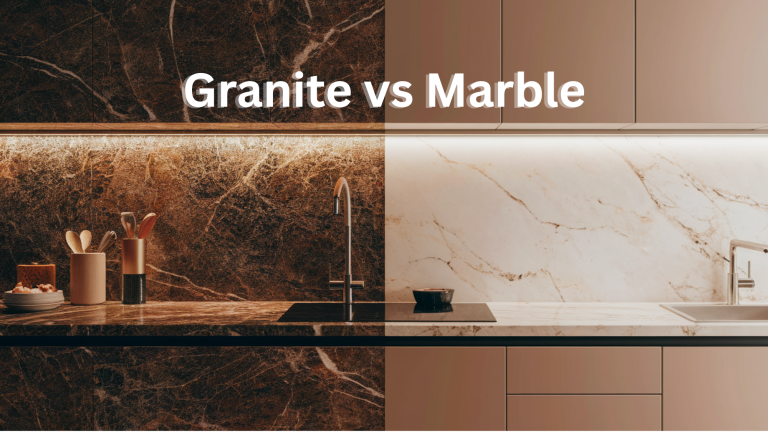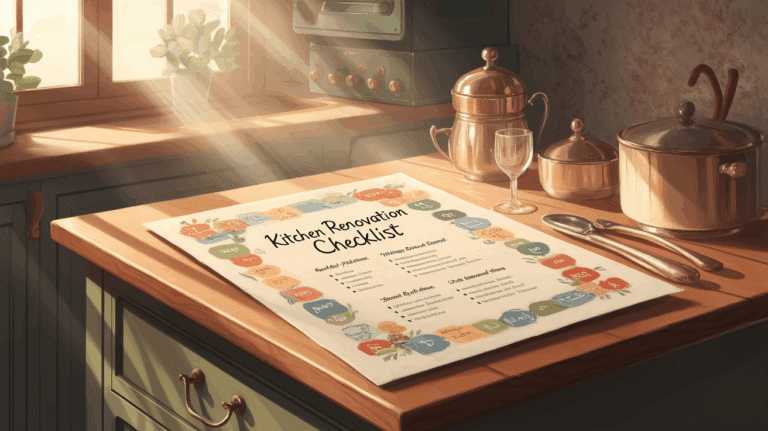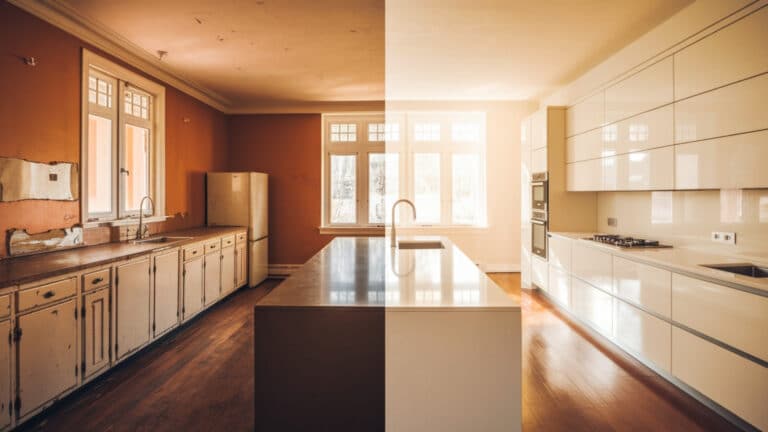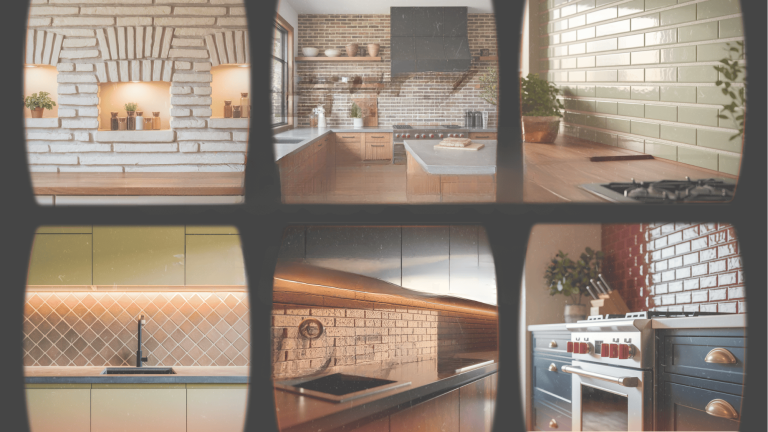Best Way to Clean White Cabinets Effectively

White kitchen cabinets are a classic choice, but they can quickly collect dirt, grease, and stains. To keep them looking fresh, regular cleaning is important.
Cleaning your cabinets doesn’t have to be hard or take a lot of time. With the right methods, you can keep them looking bright for years.
If you’re looking for everyday tips or a deep-cleaning, this blog will cover everything from easy DIY cleaning solutions to helpful tips for your white kitchen cabinets.
Supplies For Cleaning White Cabinets
Before you start cleaning, it’s important to gather the right tools. Using the proper cleaning materials ensures you don’t damage the surface and get the best results.
- Microfiber Cloths
- Mild Dish Soap
- Baking Soda
- Vinegar
- Soft Sponges
- Warm Water
Step-by-Step Guide to Clean White Kitchen Cabinets
Even with regular cleaning, your white kitchen cabinets need a deep clean every few months to tackle built-up grease and grime.
Here’s a detailed, step-by-step process to help you give your cabinets a thorough clean:
Step 1: Clear the Cabinets
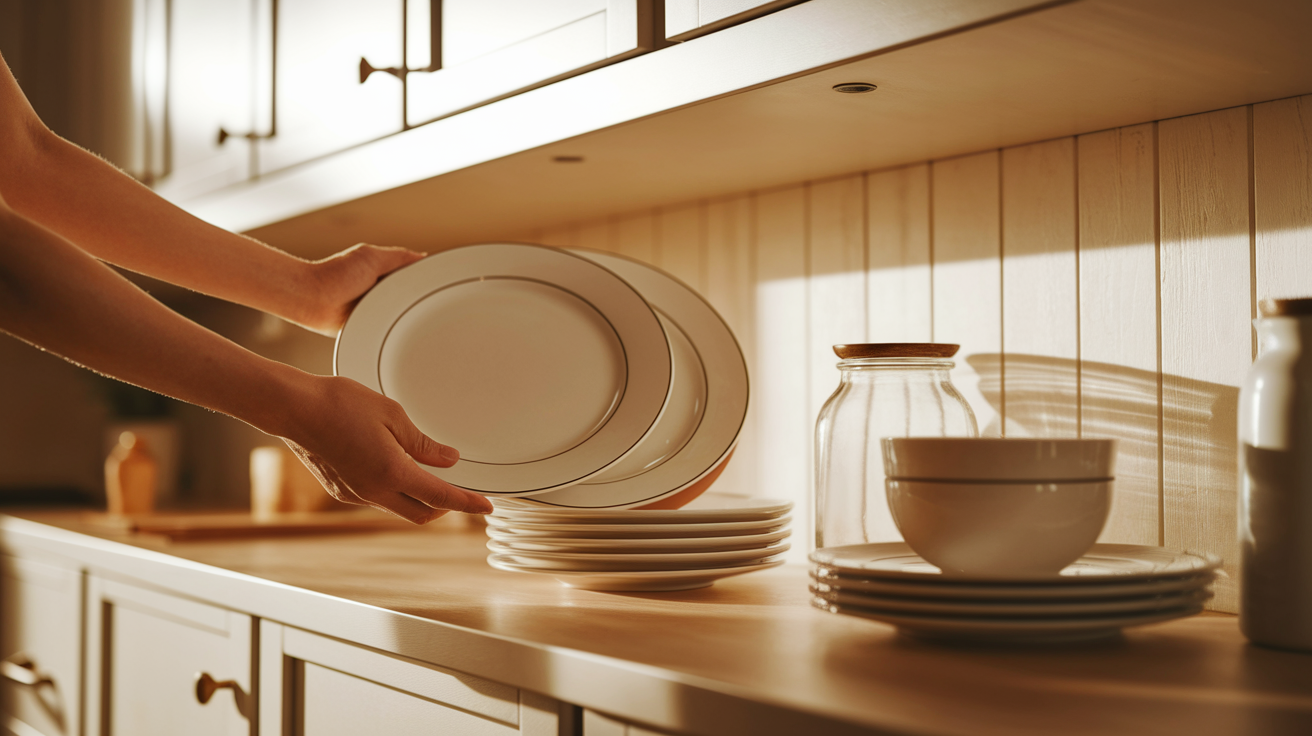
Start by taking everything out of your cabinets—dishes, food containers, spices, and any other stored items.
This gives you full access to all surfaces, making it easier to clean every corner. If you have a lot of items, consider grouping them on the counter or table to stay organized.
Tip: As you remove items, check for expired food or unused kitchen tools—this is a great time to declutter!
Step 2: Dust the Surfaces
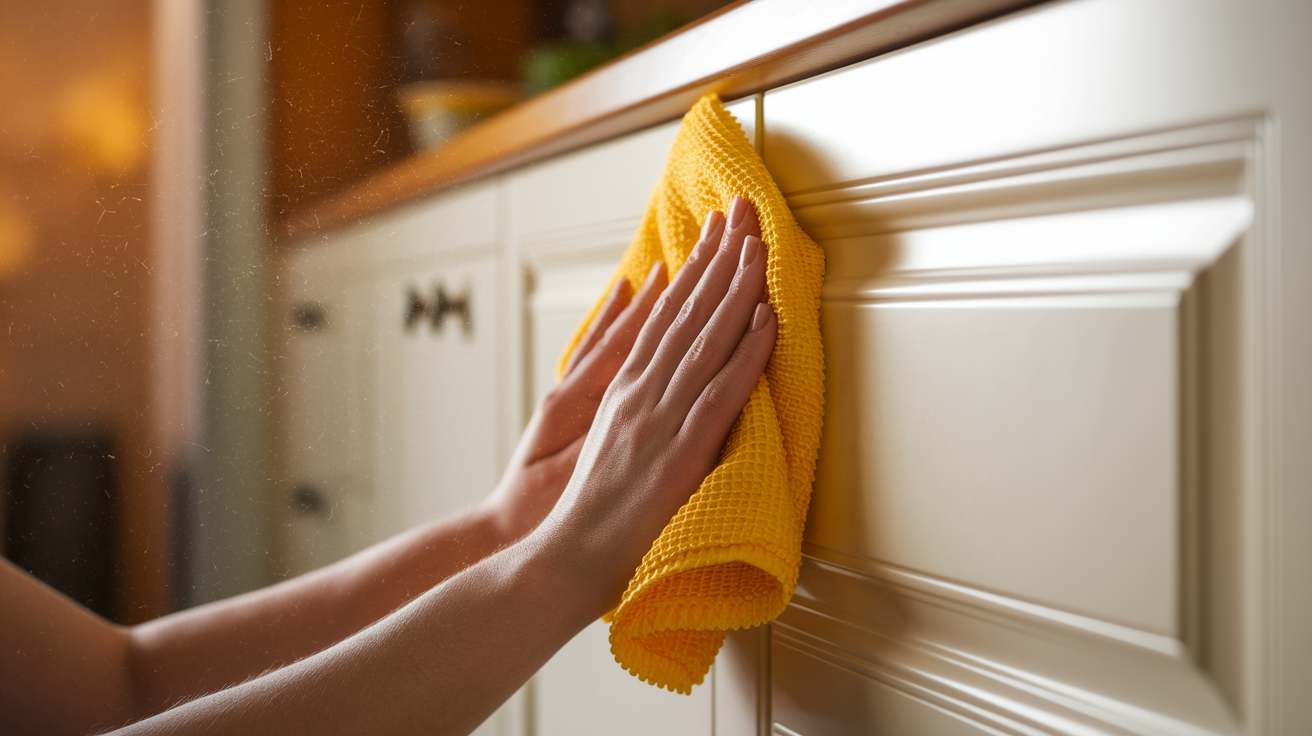
Before using any cleaning solution, dust the cabinet doors, frames, and handles with a dry microfiber cloth.
Dust tends to settle on top of cabinets and around edges, so start from the highest point and work your way down. This prevents dust from resettling on areas you’ve already cleaned.
Tip: Use a soft-bristle brush or a vacuum with a brush attachment to remove dust from crevices and corners.
Step 3: Prepare Cleaning Solution
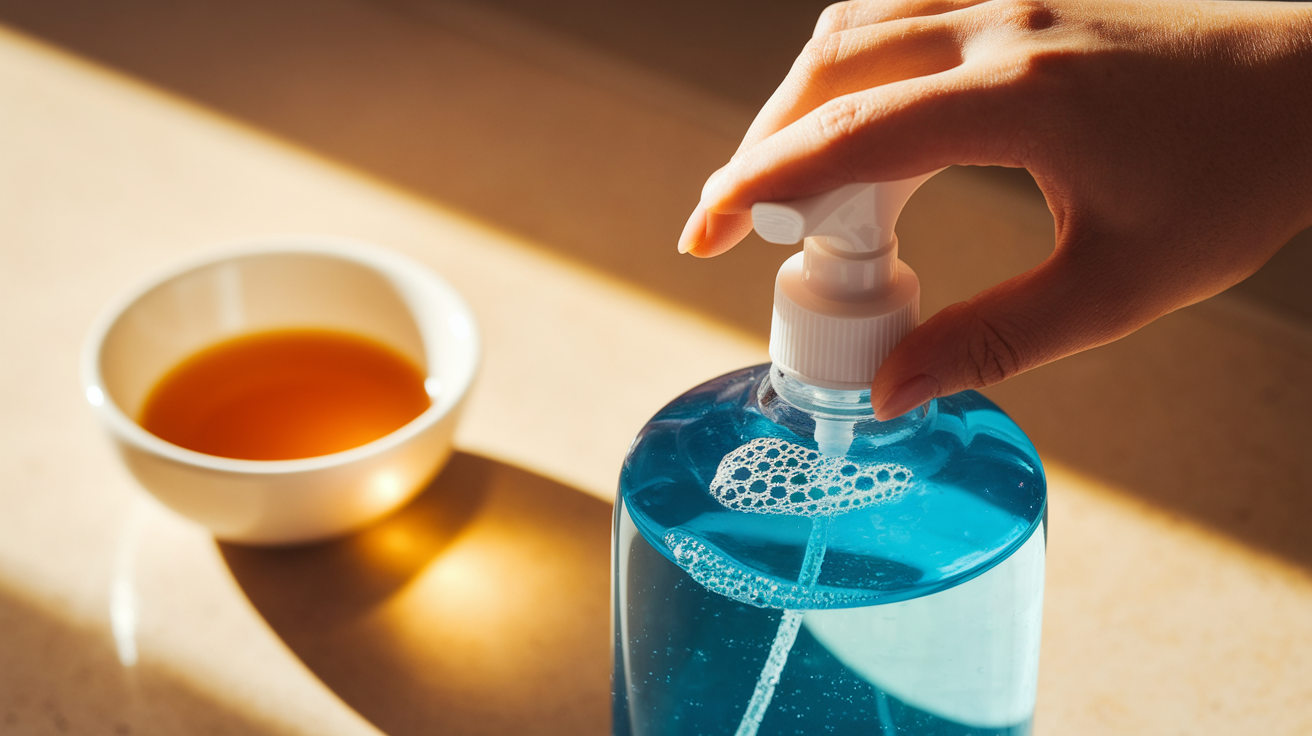
Mix warm water with a few drops of mild dish soap in a bowl or spray bottle. For extra cleaning power, add a small amount of white vinegar (about 1 part vinegar to 2 parts water).
Dish soap cuts through grease, while vinegar helps remove sticky residue and disinfects.
Tip: Avoid harsh chemicals like bleach, as they can damage the cabinet finish over
Step 4: Wipe Down the Cabinets
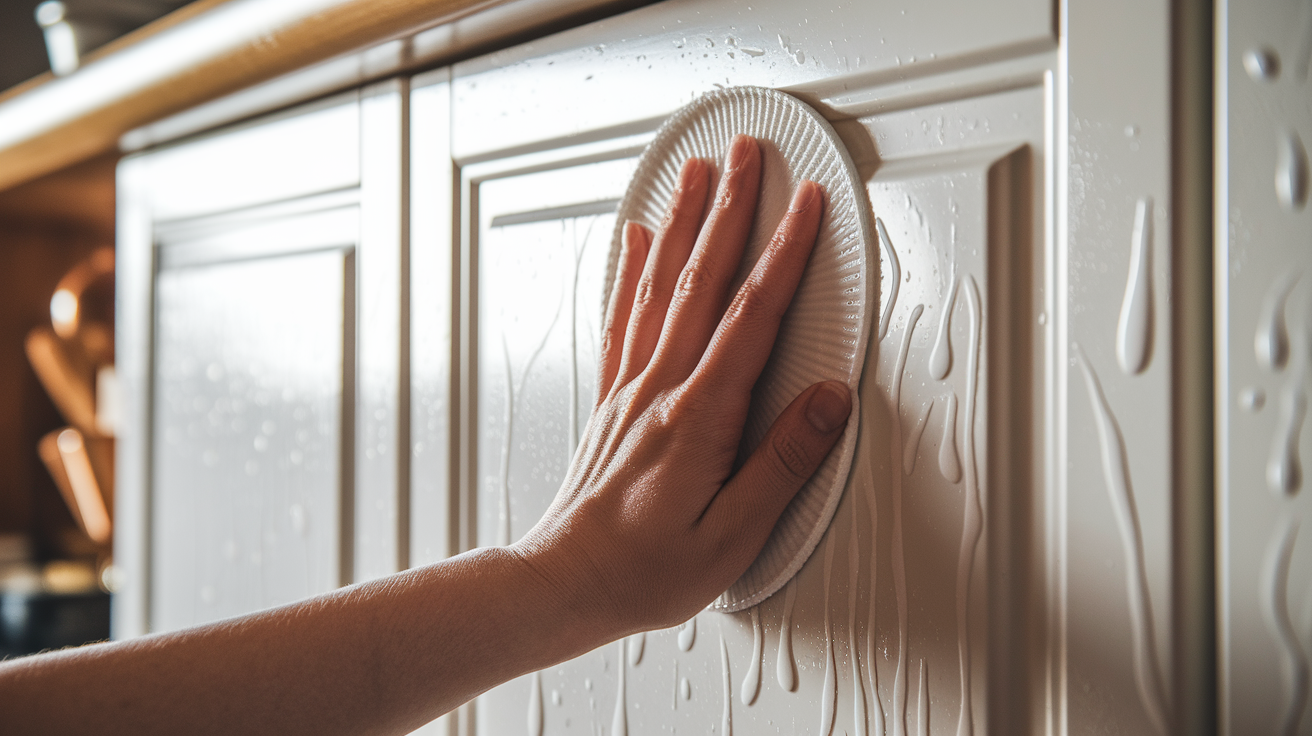
Dip a soft microfiber cloth into the cleaning solution, wring it out well (excess water can damage wood), and gently wipe the cabinets from top to bottom.
Pay extra attention to handles and knobs, as these collect fingerprints and grease. For textured surfaces, use a soft-bristle toothbrush to reach grooves.
Tip: Work in small sections to ensure no spots are missed, and rinse your cloth frequently to avoid spreading dirt.
Step 5: Tackle Tough Stains
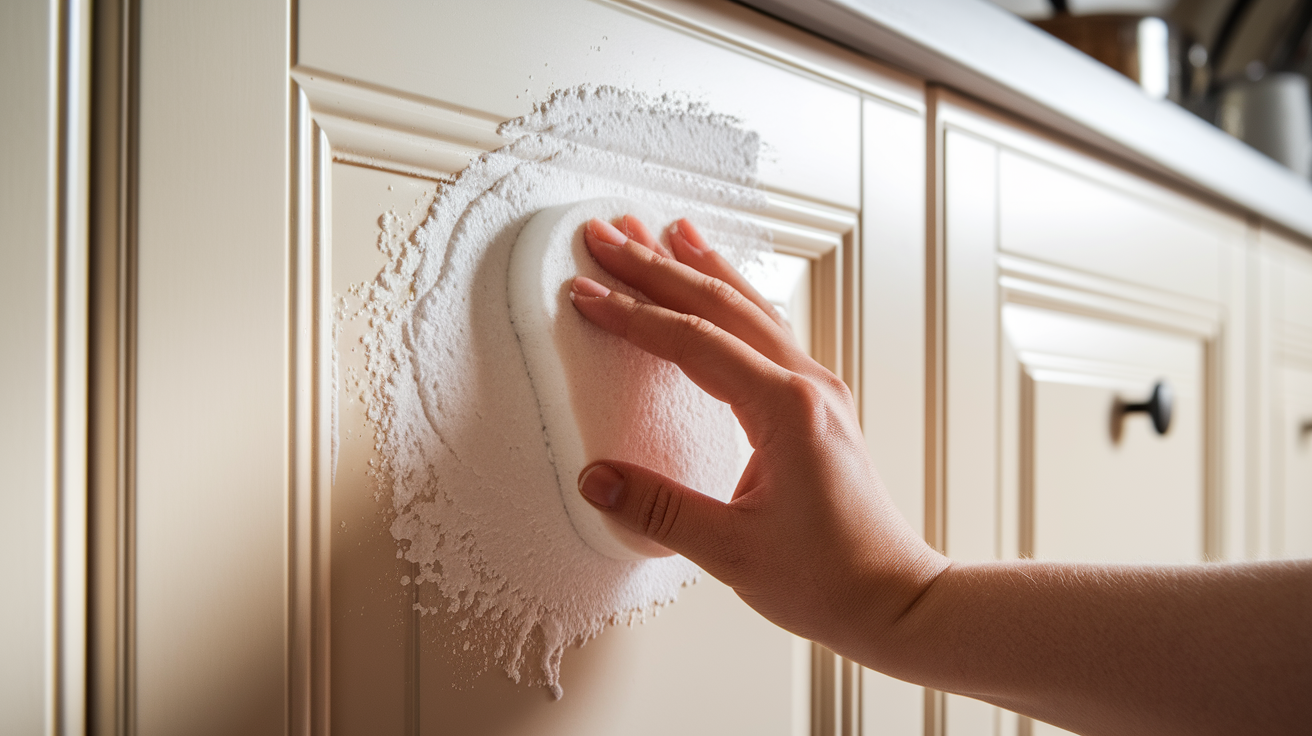
For stubborn grease or sticky spots, make a paste of baking soda and water. Apply it to the stain, let it sit for 5-10 minutes, then gently scrub with a soft sponge or cloth.
Baking soda is a natural abrasive that lifts grime without scratching surfaces.
Tip: For very tough stains, a magic eraser (melamine sponge) can help, but test it in a hidden area first to avoid damage.
Step 6: Rinse and Dry
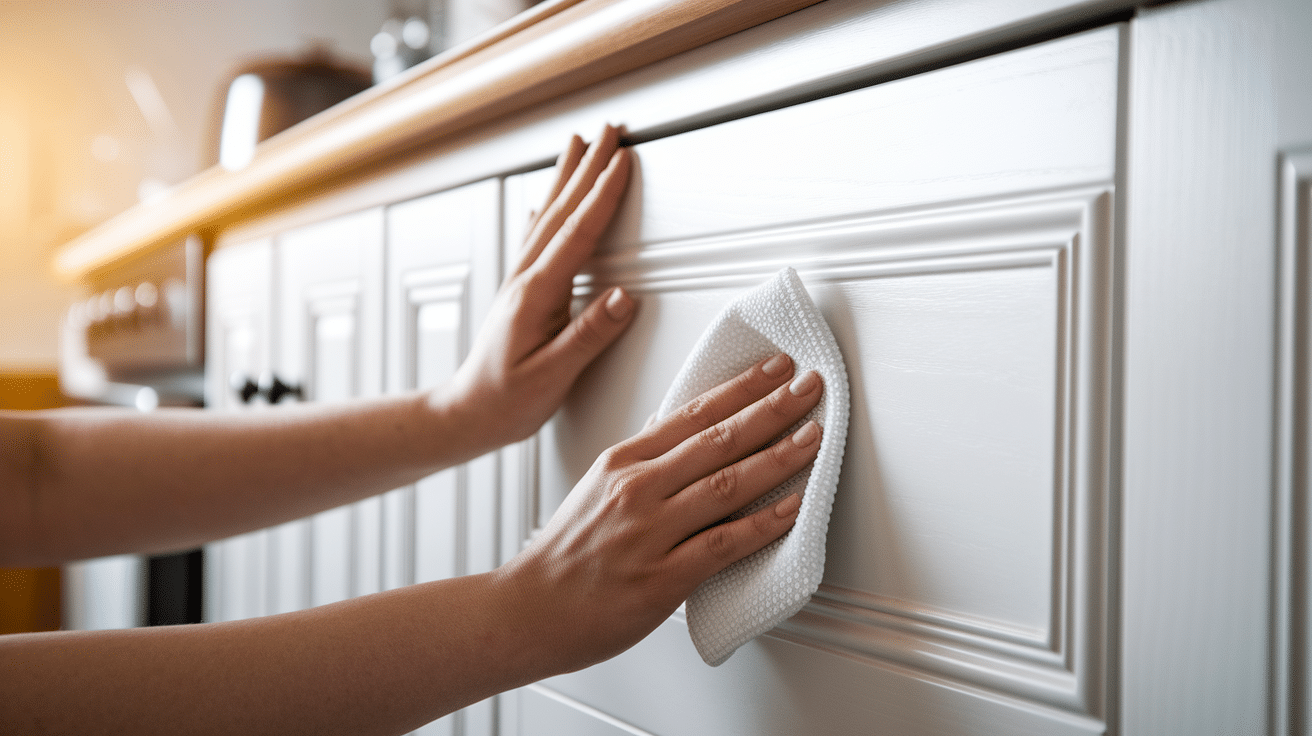
After cleaning, wipe away any leftover soap or baking soda residue with a damp cloth.
Then, dry the cabinets immediately with a clean, dry microfiber towel to prevent water spots and streaks. Proper drying also protects the wood from moisture damage.
Tip: Leave cabinet doors open for a short time to air-dry any hidden moisture in hinges or corners.
DIY Solutions For Cleaning White Cabinets
You can easily create your own effective cleaning solutions using natural ingredients that work wonders on white cabinets.
These DIY cleaners are budget-friendly, safe for your kitchen, and good for the environment.
1. Vinegar and Water Mix
A simple and effective solution for general cleaning is a vinegar and water mix. This solution is great for cutting through grease and grime.
It’s especially helpful for routine cleaning, as it gently lifts dirt without damaging the surface of your cabinets.
- Mix 1 part vinegar with 2 parts water in a spray bottle.
- Spray directly onto the cabinets and wipe down with a microfiber cloth.
- Ideal for everyday cleaning and removing stains.
2. Baking Soda Paste
For tougher stains or greasy spots, baking soda is an excellent option. It’s mildly abrasive and works well for scrubbing away stuck-on dirt.
Plus, it’s gentle enough not to scratch or damage the cabinet surface.
- Mix 3 tablespoons of baking soda with 1 tablespoon of water to create a paste.
- Apply the paste directly to the stain and let it sit for a few minutes.
- Gently scrub with a sponge or cloth to remove the stain.
3. Olive Oil and Lemon Polish
This combination helps add a natural shine to your cabinets while also cleaning them. The olive oil moisturizes the wood, and the lemon juice provides a fresh scent while also removing grease.
- Combine 1 tablespoon of olive oil with 2 tablespoons of lemon juice.
- Rub the mixture onto the cabinet surface with a microfiber cloth.
- This solution will leave your cabinets shining and streak-free.
These DIY cleaning solutions are easy to make, effective, and use ingredients you likely already have at home.
They provide a natural alternative to commercial cleaners while keeping your white kitchen cabinets looking fresh and bright.
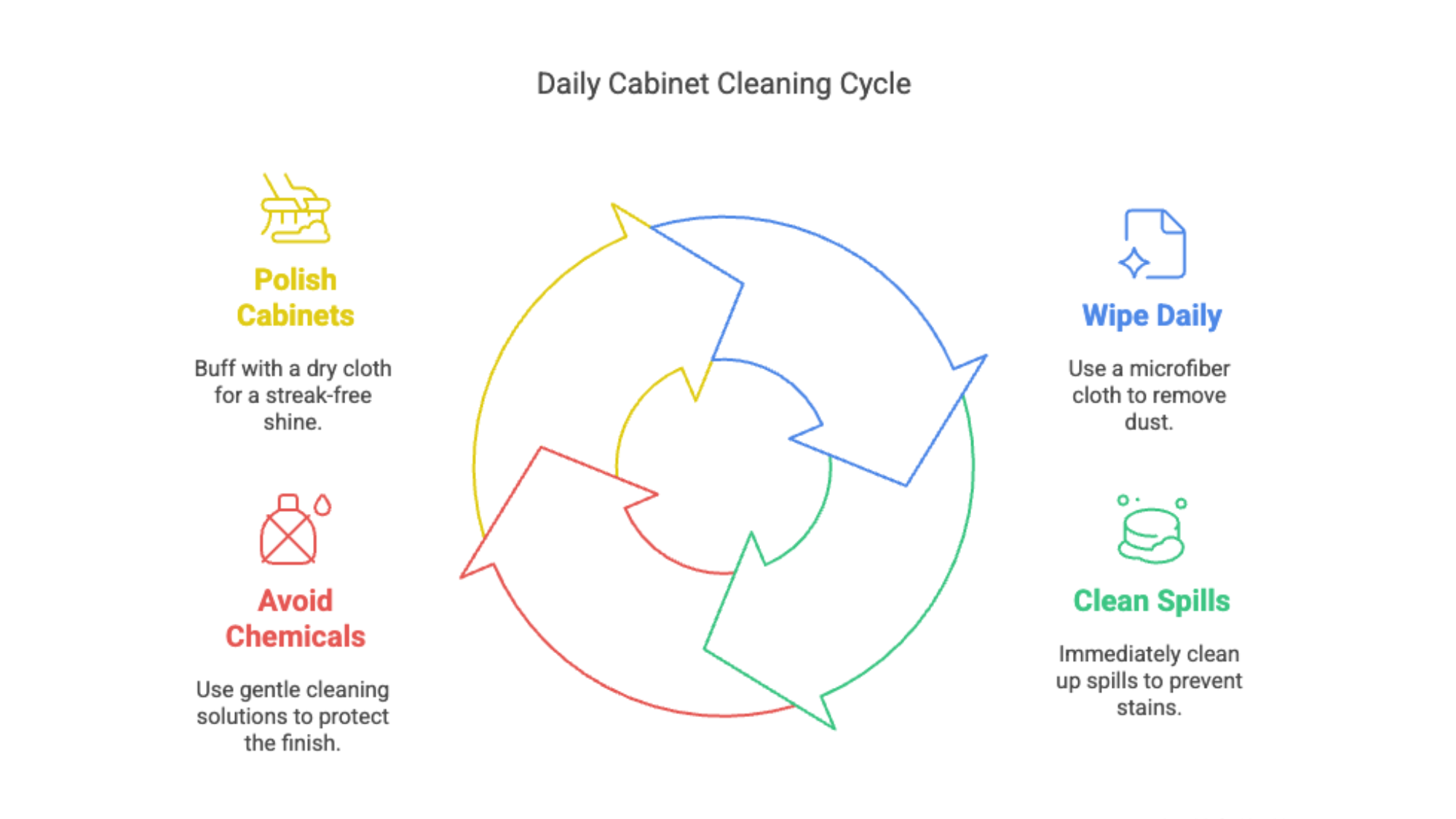
Natural Cleaning Alternatives
| Ingredients | Usage |
|---|---|
| Lemon Juice & Baking Soda | Scrub tough stains with a paste made from 1 tablespoon of lemon juice and 3 tablespoons of baking soda. |
| Coconut Oil & Vinegar | Clean and polish wooden cabinets with a mixture of 1 tablespoon of coconut oil and 2 tablespoons of vinegar. |
| Essential Oils | Add drops of tea tree or lavender oil for antibacterial properties and scent. |
Mistakes to Avoid When Cleaning White Cabinets
Cleaning white cabinets can be tricky if you’re not careful. Avoiding some common mistakes can help keep your cabinets looking fresh and new without causing damage.
- Using Rough Scrubbers: Avoid steel wool or hard sponges. These can scratch and damage the smooth finish of your cabinets.
- Using Too Much Water: Don’t soak your cabinets with too much water. Excess moisture can damage the wood or the cabinet finish. Always use a damp, not wet, cloth.
- Forgetting the Hardware: Don’t ignore handles and knobs! These areas build up dirt and grease and should be cleaned regularly, too.
- Using Harsh Cleaners: Harsh chemicals like bleach or ammonia can damage the color or finish of your cabinets. Stick to gentler cleaners like vinegar or dish soap.
- Not Drying After Cleaning: After wiping down your cabinets, make sure to dry them thoroughly. Leftover moisture can cause watermarks, which are hard to remove.
By avoiding these mistakes, you’ll keep your white cabinets looking beautiful for longer and save yourself time and effort in the long run.
Wrapping It Up
Keeping your white kitchen cabinets clean doesn’t need to be complicated. By establishing simple daily habits and performing periodic deep cleaning, you can maintain their bright, fresh appearance.
If you choose natural DIY solutions or commercial cleaners, regular attention ensures your cabinets stay free from grease, grime, and stains.
By following the tips and avoiding common mistakes, you’ll keep your kitchen looking fresh and clean for years to come. Remember, consistency is key when it comes to cabinet care.

